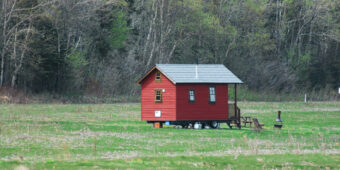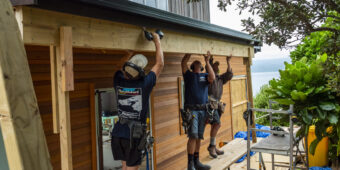Decision overides 10-year longstop
26 Feb 2025, Legal, Prove Your Know How

Duncan Cotterill partner Alysha Hinton looks at a recent Supreme Court decision that sets a new precedent for including third parties in civil offence proceedings, even if more than ten years have passed since building work occurred
The Supreme Court has just released a decision, Beca Carter Hollings and Ferner Limited v Wellington City Council [2024] NZSC 117, resolving the longstanding question of which of the Building Act longstop or the contribution provisions of the Limitation Act takes precedence. This is a significant issue in construction litigation because of the potential for building defects to be discovered a long time after construction.
Case Summary
WCC was being sued for negligence in granting a building consent, inspecting the work and issuing a Code of Compliance Certificate for a building constructed on land owned by CentrePort Ltd (CentrePort) at Waterloo Quay, Wellington (the building).
Construction of the building was commissioned by BNZ and designed to meet BNZ’s requirements – eg, those as to size and layout – and was constructed over the period between 2006–2010. BNZ leased the premises from CentrePort around February 2011.
As a result of the Kaikōura earthquake in November 2016, the building was irreparably damaged and BNZ was not able to return to the building, which was treated as uneconomic to repair and deconstructed.
BNZ filed its proceedings against WCC on 2 August 2019. Its claim focused on negligence in the design of the building’s substructure and superstructure. Damages of around $101 million were sought for various losses, including those resulting from business interruption and from property damage caused by the impact of the earthquake on the building. WCC denied liability in negligence and plead various limitation defences.
On 26 September 2019, WCC filed a statement of claim against Beca and one other third party. It was pleaded that Beca had responsibility for the provision of engineering design and construction of the building. As such, if WCC was found liable to BNZ, it claimed contribution under section 17(1)(c) of the Law Reform Act 1936 and in equity from Beca as a joint tortfeasor (an individual or entity that has been found to have committed a civil offence that injures another party) with WCC.
Beca accepted it was engaged by CentrePort to, among other matters, undertake design work and monitor construction. However, it denied liability for various reasons – most significantly the protection of the tenyear longstop in section 393(2) of the Building Act 2004.
Unprecedented Interpretation of Longstop
Until 2021, cases had consistently held that the ten-year longstop under section 393(2) of the Building Act applied to claims for contribution under section 17 of the Law Reform parties could not be joined to the proceedings beyond the ten-year period.
The High Court in this case declined to follow this line of authority. The Court decided that section 393 applied only to claims by building owners, while claims by defendants for contribution against other tortfeasors are governed by the Limitation Act 2010. The Court of Appeal upheld this decision. The Court of Appeal decided that the finality provided by the Building Act longstop is not absolute, as the cause of action for the contribution claim did not arise at the time of the building work. It instead arises when one defendant is held liable to the plaintiff. Only then can a claim for contribution for that liability arise.
By a split (3:2) decision, the Supreme Court has upheld the Court of Appeal. While accepting that the wording of section 393(2) of the Building Act – specifically “civil proceedings relating to building work” – was broad enough to capture contribution claims, the
majority determined that if section 393(2) was intended to override the special regime, which existed for contribution claims, the legislation needed expressly to make that clear. As it did not do so, the majority found that the limitation period governing contribution claims in relation to building work was section 34 of the Limitation Act 2010.
This means that for building claims, third parties who are joint tortfeasors will be able to be joined to a proceeding, even if more than ten years (longstop period) have passed since the building work occurred. A claim for contribution can be brought at any time up to two years after the party seeking contribution is found liable to the plaintiff.
Insurers of parties engaged in construction work will now need to be aware that their insureds may face claims arising out of their work for a longer period than in the past. Individuals exposed to potential liability after retirement should ensure they have run-off cover for an extended period.
If you have any questions about the effects of this judgment, please contact a member of our litigation or construction law teams.
This article is provided by Duncan Cotterill, a full-service law firm with offices in Auckland, Wellington, Nelson, Queenstown and Christchurch. If you have any questions relating to this article, please contact your local Duncan Cotterill advisor duncancotterill.com
Disclaimer: the content of this article is general in nature and not intended as a substitute for specific professional advice on any matter and should not be relied upon for that purpose.
Register to earn LBP Points Sign in
2 Comments
Leave a Reply
You must be logged in to post a comment.




As LBP holders and construction contractors, we must be more strict with the quality of construction and no longer have the fluke mentality of only needing a ten-year warranty.
#